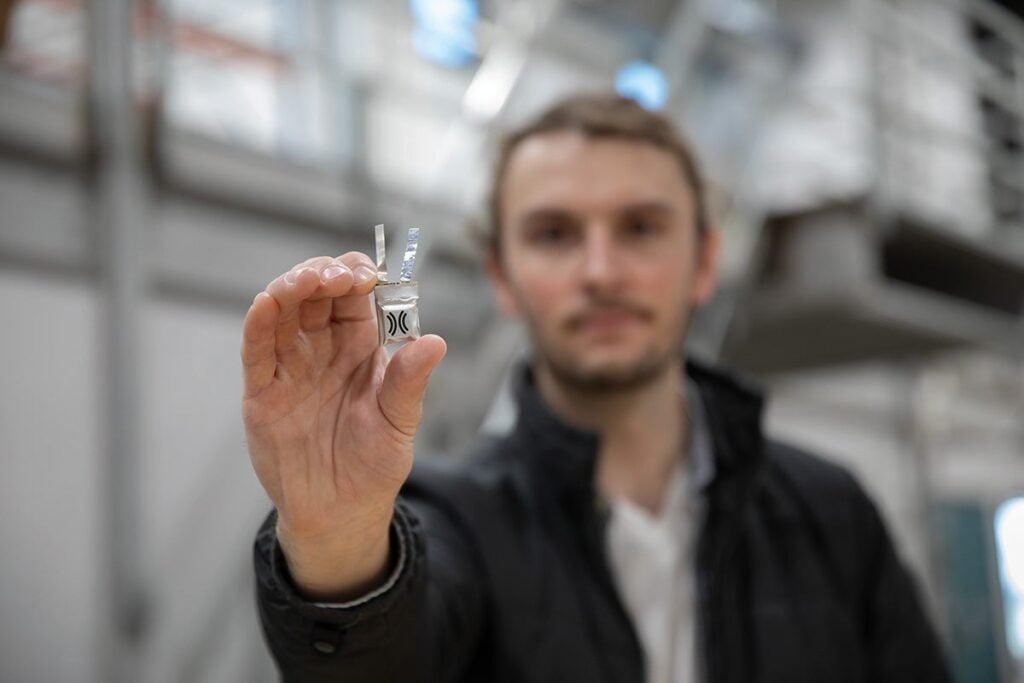A new multimillion-dollar Navy grant called the Resilient Innovative Sustainable Economies via University Partnerships (RISE-UP) is helping students create their own companies—and spur the state’s innovation economy.
Name a state with a population of about a million people, that has miles of coastlines including many islands, and has traditionally generated much of its economy based on the ocean. If you said “Rhode Island,” you are only partly right.
Alaska and Hawaii also fit that description. While the states aren’t traditionally lumped together, all three are part of a new $2.4 million grant from the U.S. Navy called RISE-UP to fuel ocean innovation.
“They are all ocean states, so to speak,” says Peter Rumsey, the University of Rhode Island Research Foundation (URIRF) chief development officer, who serves as the program executive for the RISE-UP program in RI. “And they are all strategically important—even though you can fit like 400 Rhode Islands inside Alaska.”
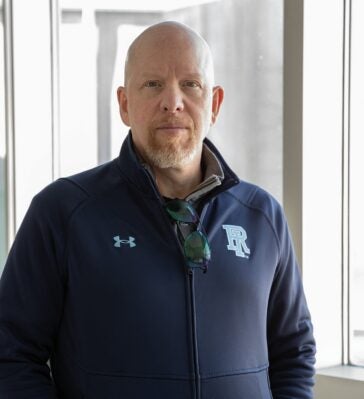
The Navy maintains an active presence in Alaska, Hawaii, and Rhode Island. Here in Rhode Island, this presence includes the naval station and U.S. Naval Undersea Warfare Center (NUWC) in Newport. Unfortunately, all three states also have suffered brain drain from students leaving to start companies in Massachusetts, Seattle, or Silicon Valley.
This is the gap that the RISE-UP grant seeks to fill by working with URI as well as the University of Alaska (UA) and the University of Hawaii (UH) to support students and help them launch dual-use entrepreneurial ventures applicable to both military and commercial purposes. This has the potential to boost the states’ economies, create jobs and provide entrepreneurial opportunities for students.
Importantly, says Rumsey, the Navy hasn’t put any pre-limitations on the types of companies students create—the intention is that by serving commercial markets, it hopes, military applications will follow.
“If you start a business purely to serve the military, you will likely struggle to launch a sustainable long-term business,” Rumsey says. “The Navy has said, ‘We want you to have a thriving business with a diverse portfolio of customers, and we want to help you grow and be vibrant and built-to-last—and by the way, we’d really love it if you could be in our mission-critical supply chain for a long time’.”
Five student entrepreneurs have served as the initial cohort for the initiative (see “Rising Stars” below), administered in Rhode Island by 401 Tech Bridge, a business unit of the URI Research Foundation. The three universities developed the program together and compared notes on ways they can collaborate in the future.
The Navy has said, ‘We want you to have a thriving business with a diverse portfolio of customers, and we want to help you grow and be vibrant and built-to-last— and by the way, we’d really love it if you could be in our mission-critical supply chain for a long time’.Peter Rumsey
“It’s allowing our students to have a broader market view and solve problems across diverse ocean environments,” Rumsey says. “They can make sure something that works in 32-degree water also works in 73-degree water.”
At each university, the RISE-UP initiative has four component parts. The flagship program, Patents2Products, is a one-year fellowship program in which students are paired with a faculty sponsor and skilled and experienced industry mentors who will help them create competitive products and services, and ideally launch a successful new venture company.
Ancita Sherel, 401 Tech Bridge program manager, explains, “Their mentors make sure their product or research is competitive and staying up to date with what industry wants.”
Another program, Ideation Studio, offers a semester-long experience that students can repeat as many times as needed to help explore ideas for a new startup. With help from guest presenters from academia, industry, and government, students develop a business plan and eventually a minimally viable product. A third program, Faculty Fellows, gives faculty funding and support to incorporate startup methodology into their curricula.
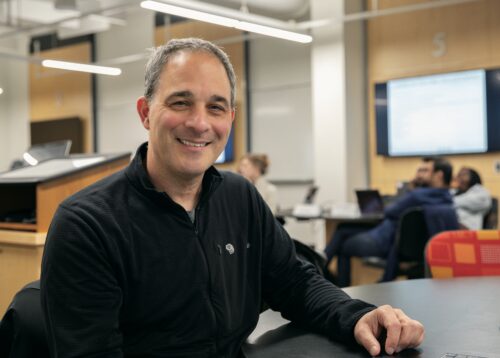
Joe Loberti, URI BS ‘88 and MBA ‘90, an independent entrepreneur serving as a consultant for the initiative, says, “They’ll be charged with saying, ‘how do we take the bones of the program and make it permanent inside the curriculum’.”
Finally, Pathways to Innovation and Entrepreneurship for Defense (PIE-D) is a semester-long, hacker-type course for advanced undergraduate or graduate students, who take on real-world problems presented to them by the Navy or private industry and come up with cost-effective solutions.
In the current course, for example, the Navy has challenged a group of highly motivated, cross-disciplinary URI students with redesigning uniforms for female officers and finding an efficient way to recover an incapacitated underwater vehicle (UV). At the same time, Regent Craft, a sea glider company recently relocated to Rhode Island from Massachusetts, has challenged students to develop a way to charge electric vehicles in the middle of the ocean. The student teams are crossdisciplinary and diverse. They work on one project/ challenge, but they present to each other weekly and share learning and feedback.
The programs are designed to naturally flow from one to another. For example, a student may take PIE-D and then develop the idea for a company in Ideation Studio that they take to market in Patents2Products, mentored by a faculty fellow. Along the way, they learn from and teach their peers to, hopefully, create an ecosystem of innovative startups.
After the initial grant, the Navy already has appropriated money for follow-up funding, and Rumsey hopes their financial support will continue for up to five years.
“Fundamentally, we’re working on creating a baseline undercurrent of translating research into real-world companies and products,” Rumsey says. “The more we can do that, the better it is for the University, the students, and the state.”
Rising Stars
Christine de Silva, Juice Robotics
Christine de Silva has been working through her Narragansett, RI based company, Juice Robotics, to enable the future of ocean exploration and defense with robust and modular marine technology components.
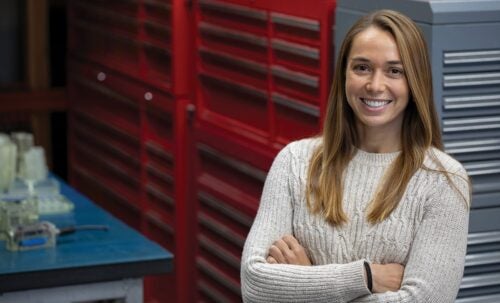
“The vast majority of technologies cannot access waters that are deeper than 200 meters—and those that do exist are often prohibitively expensive and require huge ships to deploy,” she says. Juice Robotics pots the electronics of sensors into epoxy, meaning their products do not require air filled housings making them “rugged, extremely pressure-tolerant, and affordable,” explains de Silva, who graduated from URI’s BlueMBA last spring and is a Ph.D. student at URI’s Graduate School of Oceanography.
Through her status as a Patents2Products fellow and support from Professor Andrew Davies’ Marine Ecology Technology lab at GSO, de Silva is building out Juice Robotics’ existing suite of simple-to-use sensors, called Cells, that can be clicked together like LEGO pieces. She’s learned many lessons from the initiative including the cohort’s unofficial mantra: love the problem, not the solution. To her, it means being passionate about the problem and not so fixated on any one particular solution to the extent that you close off other possibilities.
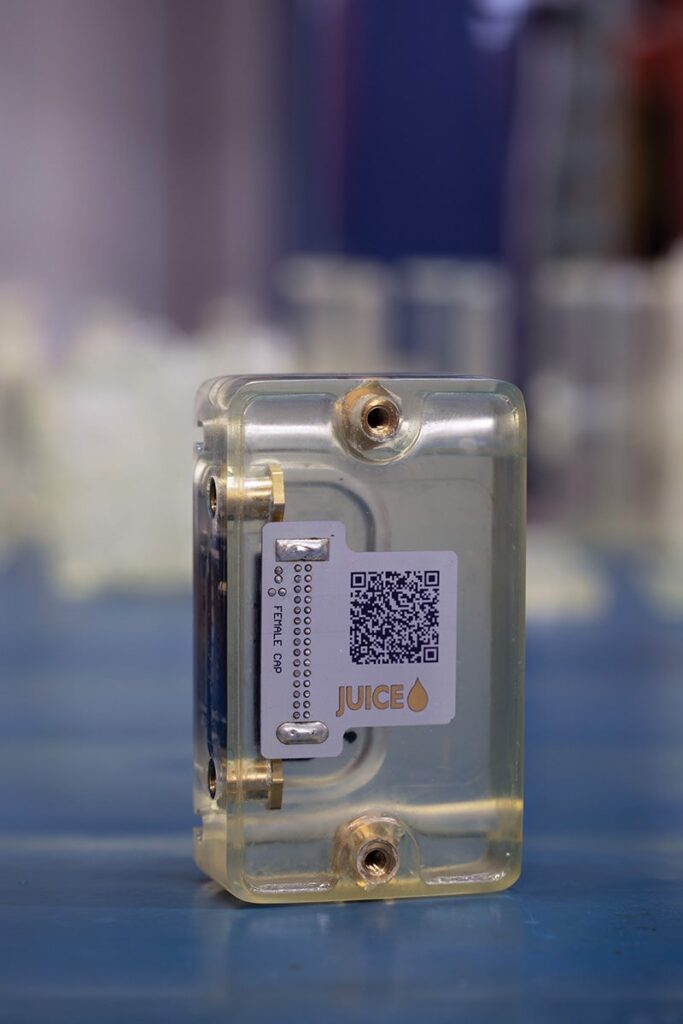
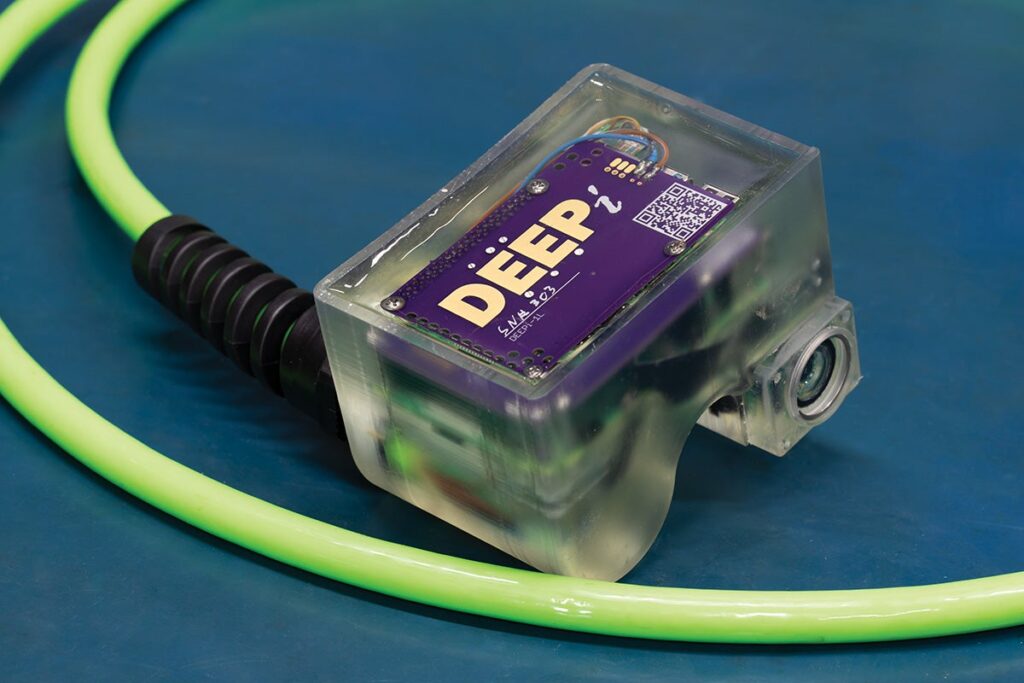
“They ended up putting that on a T-shirt for us,” she says. “The end solution or product becomes secondary and is based on the problem, not vice versa.”
Kotachi Liu, MesoLink
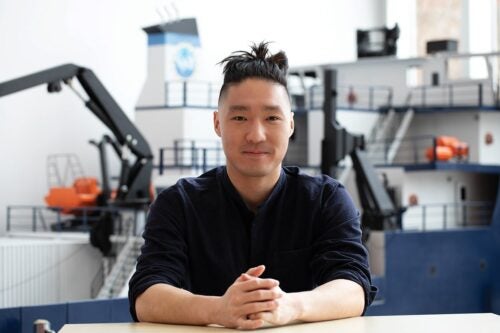
Kotachi Liu is exploring new ways to communicate in undersea environments with his company, MesoLink.
“It’s hard to accomplish tasks in the ocean,” he says. “It’s hard to see, it’s easy to get lost, and battery life constrains how much time there is.”
When deploying underwater vessels now—for example, to locate a lost vehicle or for oil and gas exploration— companies send off a single vehicle at a time with its own instructions and must wait until it resurfaces or the end of the mission to debrief. A Ph.D. student in ocean engineering, Liu is developing technology that would allow vehicles to communicate with each other in real-time, taking advantage of each other’s sensors to work together more efficiently, resulting in cost savings.
It’s hard to accomplish tasks in the ocean, it’s hard to see. It’s easy to get lost, and battery life constrains how much time there is.Kotachi Liu
“Usually within a team, there’s going to be one vehicle that has better navigation than all the other ones,” Liu says. “If this information is communicated to the other members of the team, the entire group’s navigation can be improved beyond what was possible if they acted independently.”
Chan Young Koh, Mobile Technology
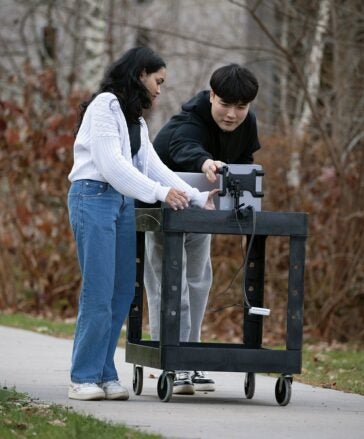
Chan Young Koh is working to engineer safer sidewalks by developing a mobile technology platform that fuses multi-sensor and machine learning algorithms to create a disability-aware sidewalk routing service and automate sidewalk surveys for better maintenance.
“High-density cities spend 10 percent of their capital budget annually just maintaining sidewalks,” says Koh, a Ph.D. student in computer science.
And yet, pedestrian mortality rates have only increased in recent years. His technology, he says, will help to locate and analyze sidewalk distress, provide safe routing to pedestrians, and prioritize maintenance in a much more cost-effective, timely manner.
“Multiple towns can deploy the solution mounted on a robot and should be able to do what 10 people should be doing,” he says.
Koh says, as he develops the technology it could have oceanic uses as well, for example, improving biodiversity by mounting it on underwater vehicles to identify clusters of sea urchins destroying kelp forests.
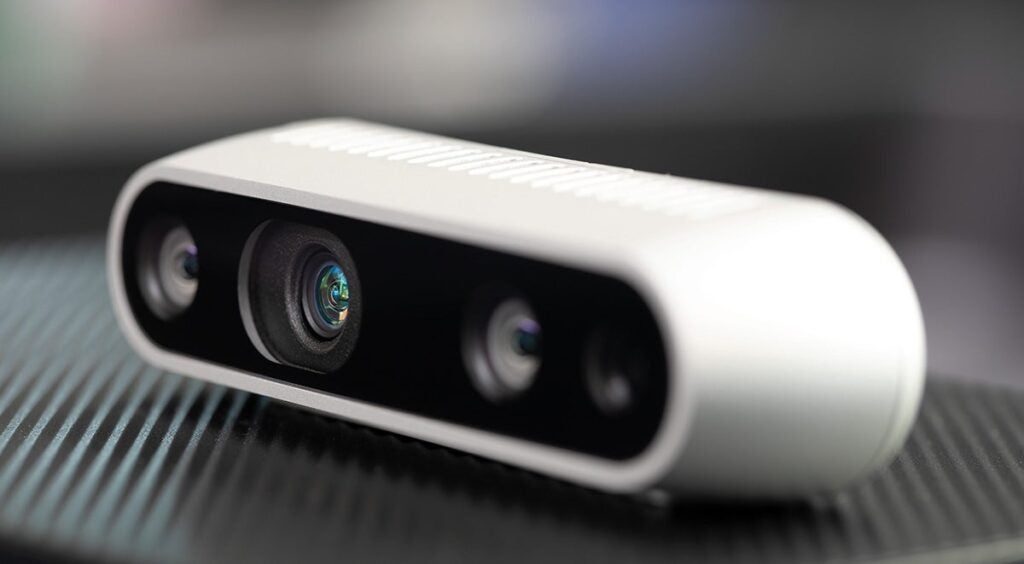
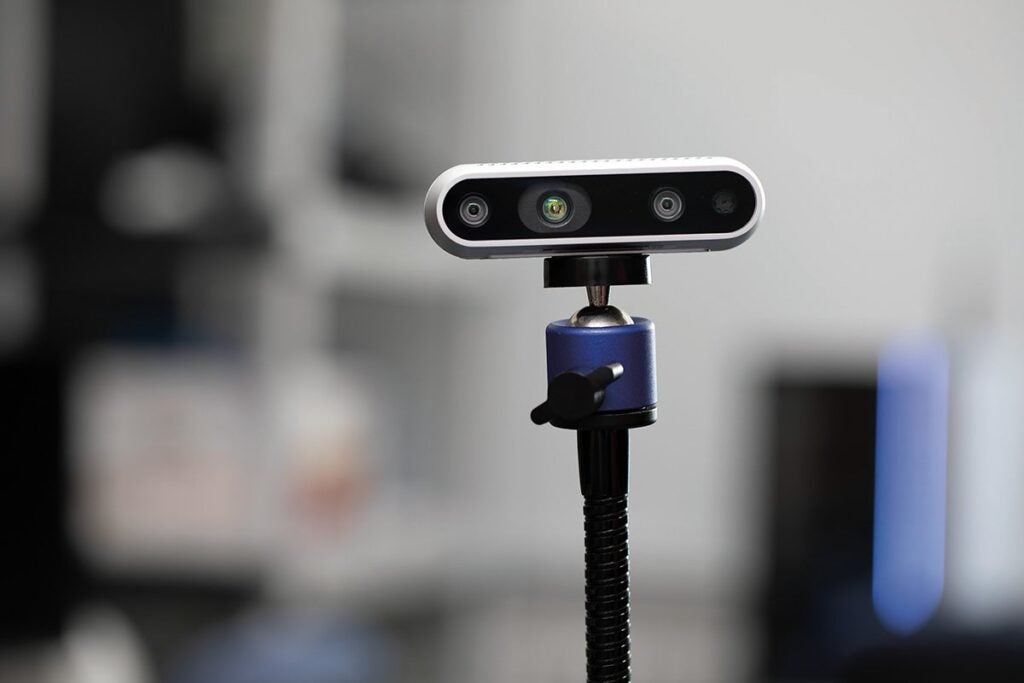
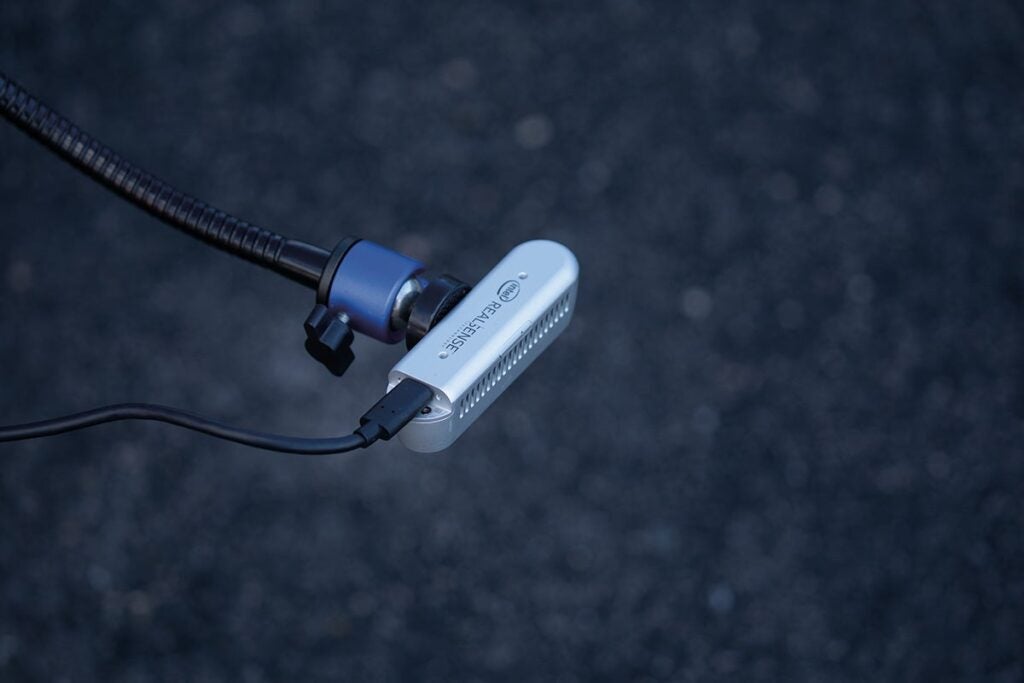
Charles Johnson, Nhuad Controllers
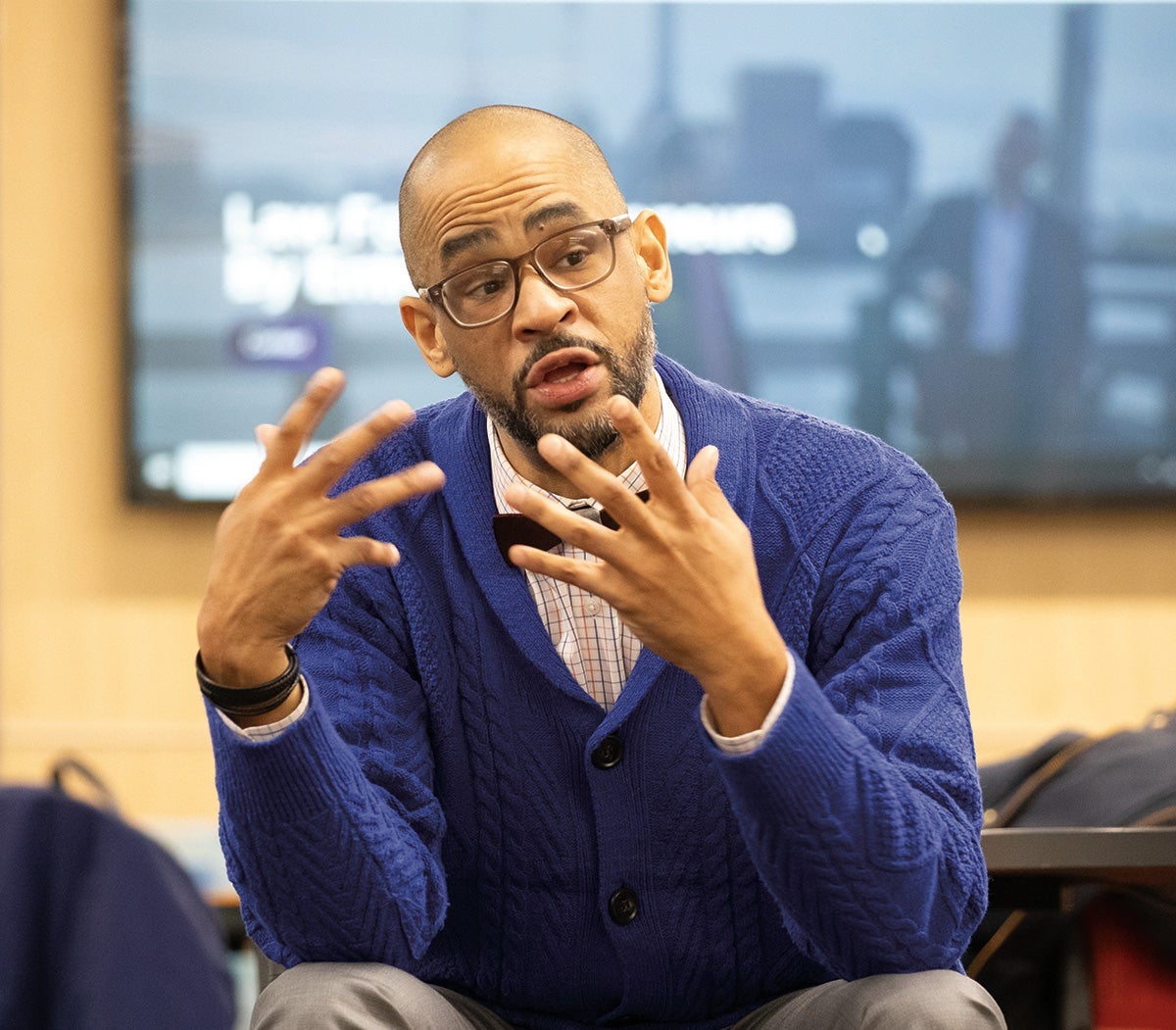
Charles Johnson was playing video games with his cousin, when he had a revelation.
“A few years ago I was playing video games with my cousin who was born with one arm,” Johnson says. “I noticed it was a challenge for him to perform certain moves while playing a game of Madden. Noticing his troubles, I asked him why he doesn’t buy a single hand video game controller, he stated that he has looked for them but there aren’t any good ones out on the market.”
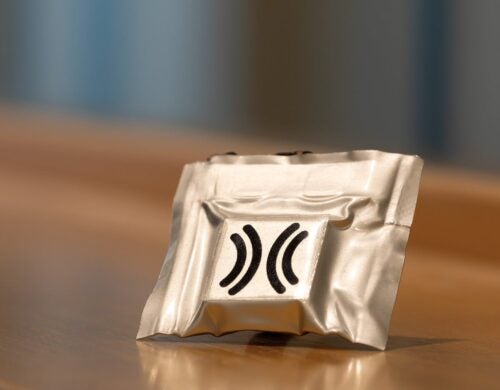
Sure enough, when he investigated, Johnson found that the current single-hand controllers on the market are both extremely expensive and lack the functionality of a two-handed controller. His company, Nhuad Controllers, looks to change that, by designing a cheaper and more functional controller.
Johnson has conducted extensive customer research and developed a business plan targeting the estimated 50 million gamers with physical disabilities that required them to only use one hand—while at the same time exploring other applications such as underwater drones. As a member of Patents2Products, he is eyeing a January 2024 launch date for his product. Johnson has conducted extensive customer research and developed a business plan targeting the estimated 50 million gamers with physical disabilities that allowed them to only use one hand—while at the same time exploring other applications such as underwater drones. As a member of Patents2Products, he is eyeing a January 2024 launch date for his product.
Michael Molinksi, Ideation Studio
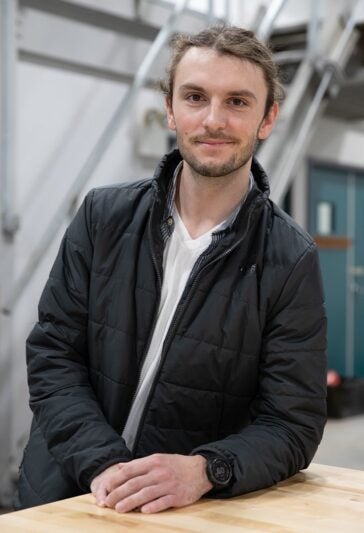
Michael Molinski has used Ideation Studio to create novel battery technology for his company Audiance. Instead of using liquid to hold a charge like most batteries, his design uses a gel polymer.
“That enables our batteries to display unique safety characteristics, such as non-flammability and benign failure mechanisms in the event of penetration or short-circuiting,” says Molinski, who graduated with an MBA from URI last year.
Ultimately, the company’s goal is to design a medical battery for cochlear implants that would be safe and long-lasting enough so the battery could be implanted under the skin. In the meantime, he says, it could be used for many undersea applications as well because it could perform in environments with extreme pressure, temperature, and salinity.
“For the ocean, in remote-operated vehicle applications or deep-sea explorations, the ability to venture further is often hampered by the need to be tethered to surface ships or recharge batteries with limited lifespans,” Molinski says. “For these use cases, our battery could be a viable solution.”
